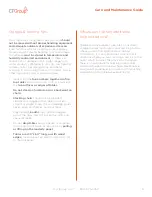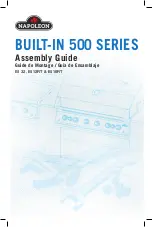
mycfgroup.com
|
800-873-3252
Care and Maintenance Guide
5
Storage & moving tips
Most furniture is designed to be static and
should
not be moved without proper handling equipment
and adequate numbers of experienced movers
.
Even furniture which is designed to be regularly
moved requires careful handling to avoid damage.
All furniture
must be stored in temperature and
humidity controlled environment
or there is a
serious risk of damage, which might range from
wood products splintering in very dry, low humidity
climates, fabric becoming moldy, and metal
oxidizing in salty or high humidity climates. Some
other important points worth noting are;
• Never slam the
top and base together on flip
top tables
and do not drop, rack, or bounce on
the
top surfaces or edges of tables.
•
Do not stand on furniture or rock backward on
chairs.
•
Stacking chairs
should not be dropped,
slammed, or dragged when being stacked,
stored, or placed in use, this will damage glides,
backs, seats and frames, and tear fabric.
• Freestanding
booths
must not be dragged
across the floor; this will loosen the joints and
cause instability.
• Do not
drag tables
across uneven or carpeted
floors and do not move or reposition by
pulling
or lifting on the modesty panel.
•
Tables over 30”x 60” long, or with wood
edges,
should be set up and stored by two (2)
or more people.
Where can I obtain additional
help and advice?
There are many excellent web sites, bookstores,
college courses, and professional service providers
where you can find additional advice and
information. It is very important to note that in
situations where you are providing a service to the
public which includes the provision of furniture,
there is no substitute for seeking professional
advice with regard to the purchase, maintenance,
and general procedures associated with furnishing
a safe and comfortable experience for all.























